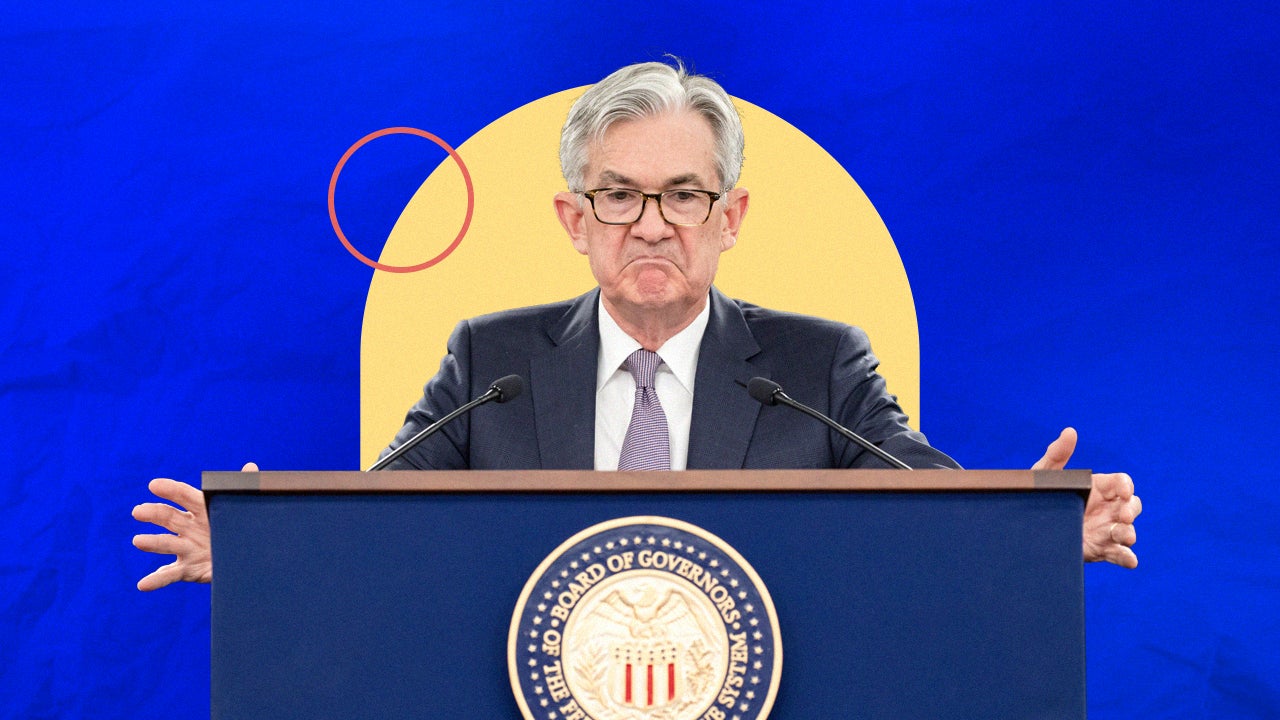Housing market needs to get back in balance, Fed’s Powell says

The fate of the housing boom is on the minds of both homeowners and homebuyers these days. Will record home values lead to a crash reminiscent of the one that made the Great Recession so painful? Or will prices simply take a breather from their torrid pace of appreciation?
The housing market needs to get back into a balance between supply and demand.
— Jerome Powell Federal Reserve Chairman
No one knows — not even the world’s most powerful central banker. During the news conference following November’s meeting of the Federal Reserve Open Markets Committee, Fed Chairman Jerome Powell acknowledged an imbalance in the housing market. Mortgage rates have gone from 3 percent in August 2021 to north of 7 percent now, according to Bankrate’s national survey of lenders.
“Housing is significantly affected by these higher rates, which are really back where they were before the global financial crisis,” Powell said during the news conference. “The housing market was very overheated for a couple of years after the pandemic, as demand increased and rates were low. The market needs to get back into a balance between supply and demand.”
What it means for home prices
Housing economists don’t expect sharp drops in prices, at least not nationally. After all, housing inventory is still very low — that’s the supply part. And while a jump in mortgage rates has dampened the demand part somewhat, demand does still outpace supply, thanks to a combination of little new construction and strong household formation by large numbers of millennials.
The National Association of Realtors said in October that home sales continued their downward trend, while prices continued to rise. The median price of homes sold nationally is now $384,800, which is up 8.4 percent from a year ago. (But it’s still below the all-time high of $413,800 set in June.)
Powell: Buyers need ‘correction’
The sharp rise in home prices over the past two years has made affordability a major challenge, particularly for first-time buyers of homes. Unlike repeat buyers, first-time buyers haven’t built an equity cushion as prices have soared since 2020.
“For the longer term, what we need is supply and demand to get better aligned so that housing prices go up at a reasonable level, at a reasonable pace, and that people can afford houses again,” Powell said after September’s Fed meeting. “We in the housing market probably have to go through a correction to get back to that place.”
While the Fed doesn’t directly control mortgage rates or housing prices, it does set the federal funds rate, a number that reflects both economic reality and attempts to guide economic activity toward sustainable levels of growth. The Fed slashed rates to zero at the start of the coronavirus pandemic. But as inflation accelerated to 40-year highs, the Fed has responded by raising rates multiple times in 2022 — including 0.75 percentage point increases at four consecutive meetings.
What you can do
How homebuyers can cope with the still-challenging market:
- Shop around for a mortgage. Rates and fees vary significantly from one lender to the next. Comparing at least three offers from competing lenders can save you thousands of dollars over the life of the mortgage.
- Look for a low down payment loan. For borrowers struggling to afford a home, the monthly payment is just one hurdle. Another is coming up with a down payment. With the typical U.S. home selling for about $400,000, coming up with 10 percent down means writing a check for $40,000. There is a potential workaround, though, in the form of mortgages backed by the Federal Housing Administration and the U.S. Department of Veterans Affairs. Both FHA loans and VA loans impose less onerous restrictions than conventional loans. While the standard down payment is 20 percent, VA loans require nothing down, and FHA loans have a minimum of 3.5 percent down.
- Consider a fixer-upper. For buyers frustrated by the lack of inventory and rocketing prices, older homes can be a good compromise. In Bankrate’s survey earlier this year, 21 percent of respondents said they would try this tactic. Of course, buying a fixer-upper means you’re taking on a project, one that brings uncertainty. No matter how careful you are about estimating your renovation budget, you can count on surprises — especially in a time when materials costs are volatile and construction labor is in short supply. Renovation experts say you should anticipate cost overruns in the range of 15 percent to 20 percent of your construction budget.
- Move to a more affordable area. Many buyers are facing the harsh reality that they can’t afford to buy in the neighborhood they really want. In some cases, buyers are deciding to move out of the most challenging markets. Home prices have been soaring everywhere, but prices are especially eye-popping in California. The median price of an existing home sold in Silicon Valley during the first quarter of 2022 was $1.88 million, according to the National Association of Realtors. In San Francisco, the typical price was $1.38 million, and in Orange County, $1.26 million. However, a number of major metro areas boast home prices that are still affordable. They include Buffalo (median sale price of $202,300 in the first quarter), Philadelphia ($297,900), Louisville ($235,400), St. Louis ($216,700), Kansas City ($287,400) and Milwaukee ($298,800).






